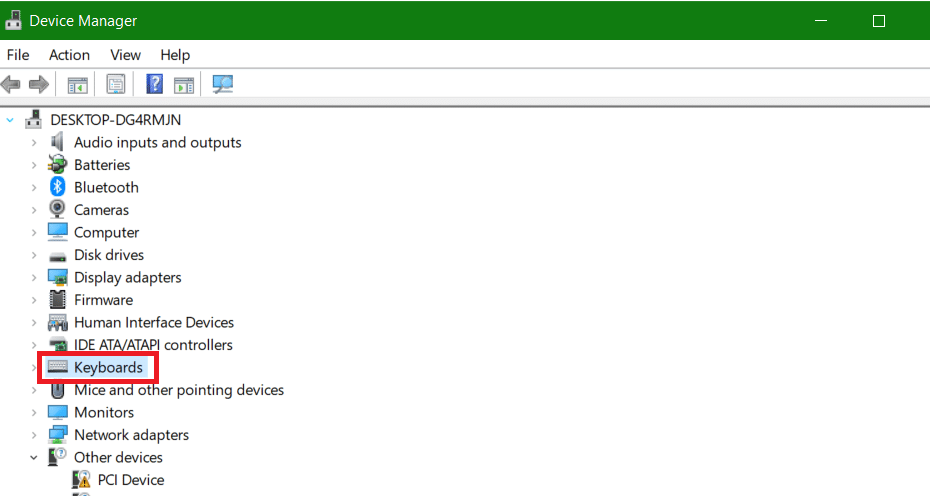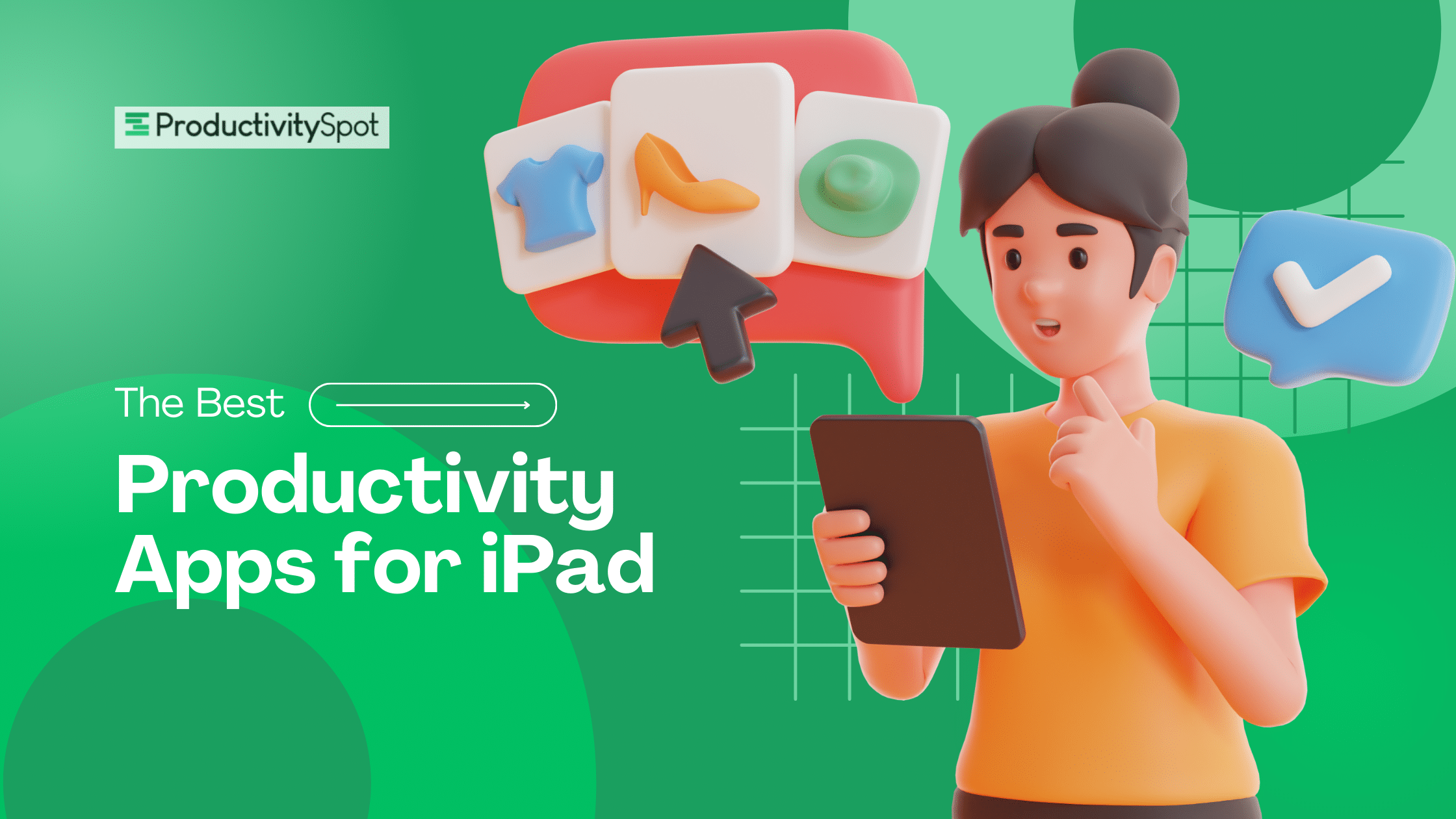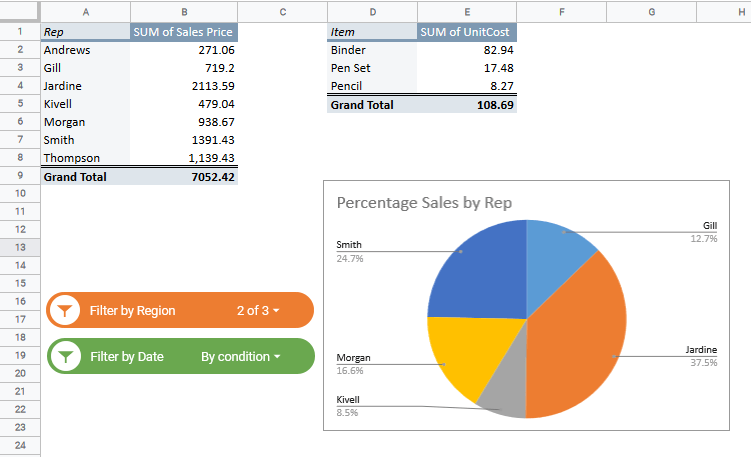Do you want to learn how to freeze a row in Google Sheets? You’ve come to the right place! In this detailed guide, I’ll discuss how to freeze and unfreeze rows or columns in Google Sheets with my step-by-step instructions and screenshots.
While there are several methods of freezing rows, the quickest and easiest way is to click and drag the thick gray line down to the row you’d like to freeze (as shown below).

This locks the top row in place, which helps when working with a large dataset that requires you to scroll up and down.
Keep reading as I discuss the different methods on how to freeze a row in Google Sheets.
Let’s get started.
Watch Video – How to Freeze a Row in Google Sheets (Lock a Row in Google Sheets)
This Article Covers:
How To Freeze a Row in Google Sheets
So, what does it mean to freeze a row in Google Sheets? It’s simple. Freezing a row locks the cells in place and keeps them in the same spot in the spreadsheet when you scroll.
I regularly freeze a cell in Google Sheets when working on large datasets because it keeps the cells or panes in view while scrolling through the worksheet.
This is useful when comparing data or keeping track of information without scrolling back and forth. It also enhances the look of your spreadsheets by hiding columns or rows when not needed.
I like to freeze rows because it keeps the header row or page titles at the top of the Google spreadsheet.
For instance, in the spreadsheet below, the top row is always visible because the first row has been frozen. Scrolling down the data set, you will see all the data you’re working on and the frozen row at the top.
Additionally, if you print the sheets, each page will have the frozen row at the top, displayed as the header.

How To Freeze a Row in Google Sheets Using the Mouse
This is a quick and easy way on how to freeze a row in Google Sheets. This method works best when freezing single or multiple rows while keeping the top row stationary when scrolling.
Let’s take a look at how we can do this in the steps below:
- Go to the top left of the spreadsheet with an empty gray box.
- There are two thick gray lines in that box. They are called “freeze panes” in Google Sheets.

- Hover your mouse on the gray line. When you see the hand icon, left-click and drag it down.
This will instantly let you freeze a row in Google Sheets above the gray line. It will make a Google Sheets sticky row(s) — as shown below:

NOTE: You can’t use this method to freeze a row in the middle of a spreadsheet. You can only freeze a row from the top.
How To Freeze a Row in Google Sheets by Right-Clicking
Another method of freezing the top row of a spreadsheet is by right-clicking the menu.
Here’s how:
- Select the top row.
- Right-click on the row.
- Go to “View more row actions.”

- From the dropdown menu, choose “Freeze up to row 1.”
Using this method, you can freeze multiple rows only from the top row.
How To Freeze a Row in Google Sheets Using the View Menu
While the mouse trick (shown above) is super handy, there is another way to freeze rows in Google Sheets, such as using the “View” menu. This method is particularly helpful when you want to freeze two rows or more.
Follow the steps below:
- Select the cell in the column where you want to freeze the rows.
- For example, if you want to freeze the top five rows, select the cell in row 5.
- Go to “View” > “Freeze” > “Up to row (5).”
- Note that the number in the parenthesis will change depending on your selected cell.

By following the steps above, you will freeze all the selected rows.
How To Freeze Columns in Google Sheets
All of the above-mentioned methods work when freezing columns in Google Sheets. All you have to do is move the horizontal gray line, which represents columns, instead of the vertical gray bar (for rows).
Alternatively, select the column options from the “View” dropdown options menu.

This gray bar between the columns indicates that the columns are frozen in place. It follows you as you scroll, just like frozen rows would.
How To Freeze Multiple Rows in Google Sheets
When freezing multiple rows or a specific data range, you must make sure the gray line is above all the rows you want to have frozen (the same rule applies to columns).
However, the same methods cannot be applied when freezing middle rows in a spreadsheet. As of this writing, Google Sheets can only freeze the row at the top of a spreadsheet, not the middle rows.
If you need to freeze a middle row, I like to use this clever workaround in Google Sheets, which allows you to filter or reorder the rows at the top of the spreadsheet, making the middle row the first (top) row.
- Select the data range and filter out the top rows.

.
- Go to “View” > “Freeze.”

- Choose the option “Up to row 5.”

And that’s it!
How To Freeze Panes in Google Sheets
A pane is a combination of rows and columns in Google Sheets. You can’t freeze them all at once, but you can use any of the methods above to freeze the rows and columns to create a frozen pane (as shown below).

How To Freeze and Unfreeze Rows and Columns on Mobile Devices
Whether using an Android phone, iOS device, or tablet, you can freeze rows in your spreadsheets via your smartphone. This will require you to download the Google Sheets mobile app if you don’t already have it.
How to Freeze/Unfreeze Rows on Android
- Touch and hold the row or column you want to freeze.

- Tap “Freeze or unfreeze” on the drop-down menu that pops up.

And that’s it, easy, right?
How to Freeze/Unfreeze Rows on iOS
Similar to the Android steps, here is how to freeze or unfreeze rows via iPhone or iPad devices:
- Tap the row number or the column letter.
- Tap the right arrow that appears.
- Tap freeze or unfreeze.
How To Unfreeze Rows in Google Sheets
There are two ways to unfreeze rows after you have frozen them in Google Sheets:
- Using a Mouse: Hover the mouse over the thick gray line that appears right below the last row that has been frozen.
- Left-click and drag it to bring it to the top.
- This will unfreeze all the frozen rows.
- Using View Options: Go to “View” > “Freeze” > “No Rows.”

Frequently Asked Questions
Can You Freeze a Single Cell in Google Sheets?
Yes. You have to freeze the row and the columns. This will allow you to freeze cell A1. You can’t freeze a random cell.
How Do I Freeze a Specific Row in Google Sheets?
To freeze a specific row in Google Sheets:
- Select the row and click on “filter views.”
- Select “Freeze,” then choose “1 row” in the menu.
- Your frozen row should remain on the screen when you scroll down.
However, as of this writing, there’s no method to freeze a specific row in Google Sheets if the row isn’t the top row of the spreadsheet.
Can You Freeze Panes on Google Sheets?
Yes. You can freeze panes on Google Sheets to lock rows and columns. To learn more, you can read our article above. Otherwise, check Google’s advice on how to freeze or merge rows.
Conclusion
Freezing rows in Google Sheets is a simple solution to several problems. There are two paths to freezing a row in Google Sheets: Using the mouse and using the view option. This is just one of the many other tips and tricks we have for you for Google Sheets.
I hope you found this tutorial helpful. I do not doubt that after some practice, you will become an expert on how to freeze a row in Google Sheets and how to freeze or unfreeze columns.
If you’re interested in further readings, then don’t miss my article on how to delete every other row in Google Sheets. Or check out this Google Sheets automation course that will save you hundreds of hours and thousands of dollars by automating tasks and cleaning processes for accurate records while minimizing human errors in data entry and calculations.
Related reading:







2 thoughts on “How To Freeze a Row in Google Sheets [Easy 5-Minute Guide]”
Thanks!
Super helpful – thank you!!
Comments are closed.